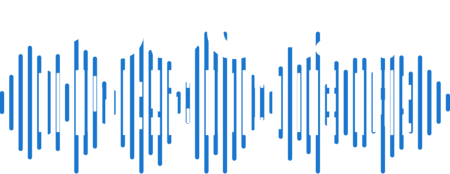Reach Your Podcast Audience Directly
 How many emails do you receive on a weekly or daily basis? Probably too many to count, let alone opening and reading all of them. Receive too many emails without worthwhile content? Unsubscribe. End up on an email list you’re completely unfamiliar with? Mark as spam. See spontaneous emails a few times a year? Forgettable. Sometimes it’s easier to lose subscribers than it is to gain them.
How many emails do you receive on a weekly or daily basis? Probably too many to count, let alone opening and reading all of them. Receive too many emails without worthwhile content? Unsubscribe. End up on an email list you’re completely unfamiliar with? Mark as spam. See spontaneous emails a few times a year? Forgettable. Sometimes it’s easier to lose subscribers than it is to gain them.
All that aside, people ignore certain emails because they bring them no value. When interacting with your podcast audience, think about the value you are providing them, just like you do when producing your episodes. That value may be different too. Your emails should serve a purpose to its readers and not just to yourself.
The ability to reach your audience via email can be an incredible tool, if used correctly and wisely. Like with podcasting, consistency can be key with growing an email list with a respectable open and read rate. Here are a few key steps to ensure you’re not wasting your time or anyone else’s:
Build That Email List
It all starts with a list. No matter how big. Not sure how to begin building your email list? There are plenty of ways to do so, read some strategies here. Here are some tactics we encourage you to try. Include a link on your website and mention it on your podcast. There’s a good chance people following your social media will take the next step here, include a link to sign up in all of your bios.
As time goes on, you’ll lose some subscribers but that means you’re keeping the ones that find your content valuable and/or meaningful. It varies depending on the industry, but overall the average open rate of emails is 18%. Whatever email service you use will include this data and you can track your progress as you find your footing with content. Here are additional tips on how to improve your open rates and more.
Keep it Fun
As you begin sending out regular emails, you can get creative with the type of content you include. You can try something fun such as an audience shout out or contest for some free merch. Did you post photos of your studio and guests to Instagram? Reshare them here and include anecdotes from recording.
Email templates are extremely easy to use and are a great way to show off your brand. We use Mailchimp, but there are plenty of services to choose from. You can send different types of emails, it doesn’t all have to be put into one email twice a month. If you’re not comfortable writing, keep the copy short and the content lively.
Don’t Forget a CTA
You’re emailing your audience because you want them to do something, right? Specifically mention what you want them to do in your call to action. If you want them to listen to the episode, include a player or social share that includes a brief clip. Want them to subscribe to your podcast? Include links to subscribe on multiple platforms. If you want to grow your audience, ask them to forward their friends that would enjoy listening.
Regularly Include:
- A link to the episode
- Brief recap
- A few choice pieces of the show notes
- Call to action of your choosing
Dos and Don’ts
- Do edit and proofread your copy. Consider hiring an editor or asking a friend to help you review.
- Don’t include numerous photos, gifs or videos. It’ll cause slow loading times, not a good look.
- Do send from a designated email address associated with your podcast.
- Don’t skimp out on a catchy, but truthful, subject line. It has to attract them but not feel like clickbait.
Don’t get overwhelmed by all the job titles you take on as a podcast host, including newsletter-writer. Emails really can be a simple and consistent way to not only keep your audience informed but to keep in contact with them. You’ll find some people will respond and expand on your podcast community. We highlighted the importance of email lists last week on our company show, Podcast Insider, listen here. Follow some of the steps and recommendations above and you’ll be on your way to a fulfilled email list.
Written by: MacKenzie Bennett
 MacKenzie Bennett, has worked in podcasting for seven years, sometimes behind the mic but mainly behind the scenes as part of the marketing team at Blubrry Podcasting.
MacKenzie Bennett, has worked in podcasting for seven years, sometimes behind the mic but mainly behind the scenes as part of the marketing team at Blubrry Podcasting.





